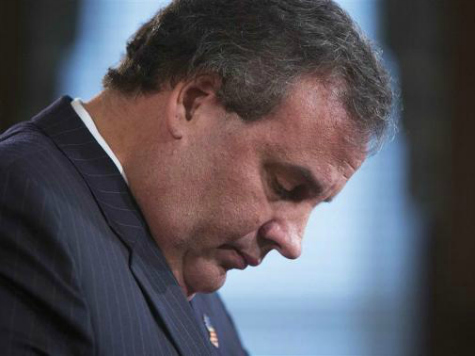
The Chris Christie bridge scandal has kept journalists reading all weekend, as the New Jersey Legislature released thousands of pages of documents related to the incident Friday. Among them is the actual traffic study those involved claim was responsible for the lane closures.
It concludes that closing lanes hurts traffic flow.
Governor Christie apologized profusely for dismissing the possibility that those who work for him could have caused four-hour traffic delays on the first week of school last year for political retribution. When he did dismiss the possibility, he was under the impression that his underlings in transportation were conducting a “traffic study” that required the lanes to be closed.
The documents released this weekend show that former Port Authority official David Wildstein, who was so responsible for the closures that he personally went to the George Washington Bridge on the first day to make sure officials there did what he ordered, told those involved that the lane closures were to conduct a traffic study, as well.
Many doubted that such a thing exists, but the Legislature released a Powerpoint presentation this weekend on the closure of lanes to Fort Lee titled “Reallocation of Toll Lanes at the GWB: An EARLY Assessment of the Benefits of the Trial.” It is from the week of the closures and appears to be precisely the study that Wildstein and others claimed was being done. It is worth noting that the documents are from the hearing in which Wildstein testified and that he handed them over.
“Reallocation of Toll Lanes at the GWB” does appear to be a study; it has charts depicting the traffic flow normally at the Bridge at certain times compared to the traffic during the study, and it analyzes various hypotheses as to what the closures would do.
While most who have given the study the time of day have called it, among other things, “stupid” and proof of a “failure,” it does not appear to be a sloppy cover at all and should not easily be dismissed. What the study proves is that whoever planned this closure thought of as thorough a coverup plan as possible and was dedicated to following through on the alibi to the point of presenting the Port Authority with pseudo-science that requires some effort to detect as such.
The study does, indeed, find the obvious: that closing traffic lanes hurts traffic. It specifically notes that “queues were predicted to continue until around noon… this matches actual performance observed by GWB management,” a sign that those who orchestrated the “study” knew the delays would be between 3-4 hours.
However, the study looks at far more than just that. It presents a hypothesis that, perhaps, giving those lanes to main traffic would ease the traffic on I-95–traffic made up not just of work commuters but travelers using the interstate to get much further than Manhattan or Fort Lee. The hypothesis is very, very wrong, as flooding this traffic with normally segregated Fort Lee vehicles does more harm than good.
Not only did the study find the that traffic efficiency is reduced astronomically when the local Fort Lee lanes are allotted for all other traffic, it found that this would have a devastating impact on revenue gathered by EZ Pass. Given that one of the lanes given to Fort Lee is an EZ Pass lane, once those lanes are removed, that traffic merges with all other traffic on I-95. In so doing, many commuters who would have used an EZ Pass lane instead get swept up in traffic and use cash lanes, taking that revenue away from EZ Pass.
While the study did find that more harm than good comes from opening those lanes to mainline traffic, it also found that each vehicle on I-95 did save five minutes of time thanks to the new lanes. It determined that mainline traffic’s saving five minutes was not worth local traffic’s losing four hours.
Many will dismiss this as barely a facade of a real study. After all, the last page, labeled “Conclusions,” only has one bullet point: “TBD.” Indeed, as a traffic study, it has little to no value.
However, it does point to the sophistication of the conspiracy – whoever planned this was committed to keeping the lie that this was not to hurt someone (probably Fort Lee Mayor Mark Sokolich, though that remains in dispute) and had enough of a team ready to present Port Authority with something more than a shrug when asked, “What traffic study?”
The entire “traffic study” appears several times in the “Exhibit A” section of the documents released by the New Jersey Legislature. Thankfully, Jen Chung at Gothamist has excerpted it from the unwieldy PDF and uploaded it in Scribd. Take a look below:

COMMENTS
Please let us know if you're having issues with commenting.